How to Grow & Care for Rutabaga (Brassica napus)
Written by Iris
Nov 08 2021
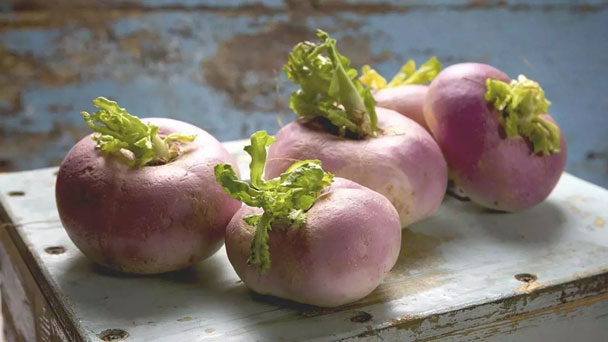
Rutabaga (Brassica napus) is a root vegetable that originates from a hybrid of cabbage and turnip. Rutabaga has other names in different parts of the world: Rotabagge, Swede, Maip, Snadgers, Neep, Yellow Turnips, etc. The roots and leaves of the kohlrabi plant are edible. Roots can be prepared in a variety of ways -- mashed, baked, and mashed. Rutabaga is a good source of vitamin C, sugar, dietary fiber and some minerals. This blog will introduce how to grow Rutabaga in detail.
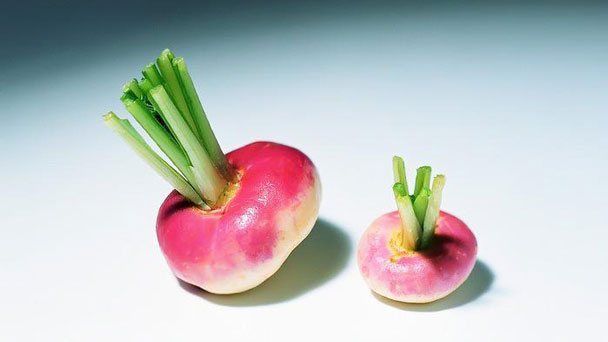
It is best sown in place as this crop does not transplant well. Do not attempt to grow rutabaga indoors or in a greenhouse.
For planting depth, follow the instructions on the seed packet. Generally, seeds should be sown at a depth of 1/2 inch, or 1/4 inch for early spring plantings.
Rake and aerate the soil, plant seeds every few inches in rows, and then thin to six inches apart when seedlings are a few inches high. Rows should be spaced two feet apart.
You can also choose to broadcast and rake seeds into a bed of soil and thin later to give each plant 6 inches of room to grow.
Full sized rutabaga roots can grow fairly large, about the size of a grapefruit. Soil needs to be 40 degrees for germination, which can take one to two weeks.
Use a tool used for cutting, preferably the cutter, to cut off a small slice at the bottom of the plant that has the root on it. Put it on top of a cup of water and wait for a few weeks until the elongated roots become visible without stress.
Once those are grown, transplant the rutabaga into the soil and wait a few months until it is fully grown.
Consistently add fresh water because it is fully rooted. Rooting will generally occur within the third or fourth week, but some plants will usually take longer than expected.
When the roots are 1-2 inches long or longer, the cutting is at this point ready to be potted up.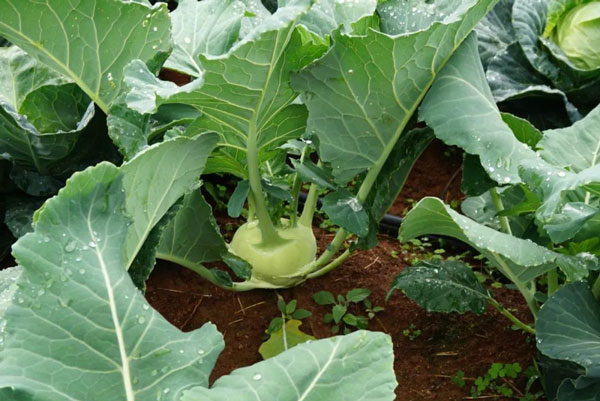
A soil test should be taken to determine the soil pH and nutrients needs. The optimum pH for rutabaga production is 6.0 to 6.5. Apply limestone according to soil test recommendations at least three months prior to planting to adjust the pH to the proper level.
Soils that are infested with root-knot nematodes should be avoided particularly for the fall crop; these pests will cause deformed roots. Do not plant turnips or rutabagas after other cole crops.
Thoroughly soaking the ground every 2-3 days is better than watering a little bit daily. Deep watering encourages Rutabaga roots to grow further into the ground resulting in a sturdier plant with more drought tolerance. How often to water will depend on rainfall, temperature and how quickly the soil drains.
To check for soil moisture use your finger or a small trowel to dig in and examine the soil. If the first 2-4” (5-10cm) of soil is dry, it is time to water.
Flower buds can be pinched off to force the plant energy into fewer fruits that develop faster.
Vining plants can become invasive in a confined garden space. If necessary, entire vines can be removed down to the main stem to keep plants under control.
Never prune away more than 1/3 of the plant or it may become weak and unproductive.
Remove vegetables as soon as they mature. Leaving them on the plant any longer than necessary can affect flavor and texture, and mature fruit steals energy from younger developing fruits.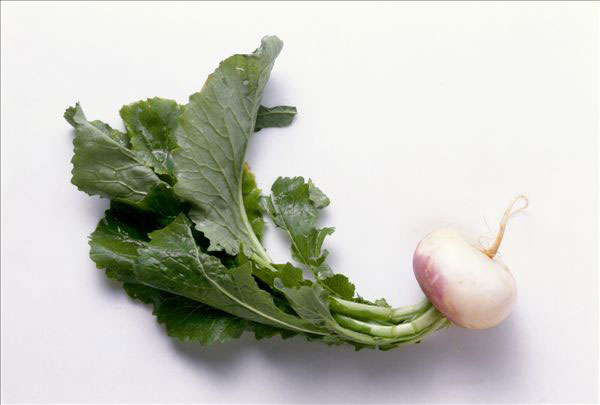
American Purple Top: Popularly grown variety with large bulbs; matures in 90 to 100 days
Laurentian: Heirloom variety with uniform, sweet bulbs; matures in 90 to 120 days
Pike: Similar to ‛Laurentian' but a little hardier; matures in 100 to 120 days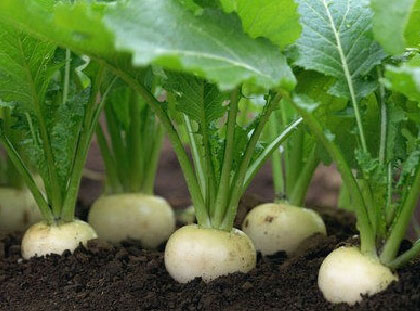
Read Next:
15 Fall Vegetables to Plant for Your Autumn Garden
Where to Grow RutabagasWhen to Grow RutabagaHow to Grow RutabagaGrow Rutabaga from SeedsGrow Rutabaga from Stem CuttingsHow to Care for RutabagaRutabaga Lighting RequirementsRutabaga Soil CareRutabaga WateringRutabaga Temperature & Humidity CareRutabaga FertilizerRutabaga PruningRutabaga Pests & Diseases CareVarieties of RutabagaRutabaga FAQWhat is a good companion plant for rutabaga?What are the benefits of rutabagas?
Where to Grow Rutabagas
Rutabagas grow best in well-worked, well-drained soil rich in organic matter. Add aged compost to planting beds in advance of sowing. Remove soil lumps and rocks which could cause roots to split or become malformed. Add aged compost to planting beds before planting and as a side dressing at midseason. Rutabagas prefer a soil pH of 5.5 to 6.5.
When to Grow Rutabaga
Rutabagas grow best in cool weather. Sow rutabaga seed in the garden 4 to 6 weeks before the average date of the last frost in spring. Sow rutabaga also in late summer for autumn or winter harvest. In mild winter regions sow rutabaga in autumn for winter harvest. grow rutabaga so that it comes to harvest before temperatures average above 75°F (24°C); rutabaga requires 60 to 90 days to reach harvest. Rutabaga roots will become grow small and stringy in hot weather.How to Grow Rutabaga
Grow Rutabaga from Seeds
Rutabaga is very easy to grow.It is best sown in place as this crop does not transplant well. Do not attempt to grow rutabaga indoors or in a greenhouse.
For planting depth, follow the instructions on the seed packet. Generally, seeds should be sown at a depth of 1/2 inch, or 1/4 inch for early spring plantings.
Rake and aerate the soil, plant seeds every few inches in rows, and then thin to six inches apart when seedlings are a few inches high. Rows should be spaced two feet apart.
You can also choose to broadcast and rake seeds into a bed of soil and thin later to give each plant 6 inches of room to grow.
Full sized rutabaga roots can grow fairly large, about the size of a grapefruit. Soil needs to be 40 degrees for germination, which can take one to two weeks.
Grow Rutabaga from Stem Cuttings
You can grow rutabaga vegetable from cutting if you do the cutting right; below is a guide to help you cut the vegetable correctly.Use a tool used for cutting, preferably the cutter, to cut off a small slice at the bottom of the plant that has the root on it. Put it on top of a cup of water and wait for a few weeks until the elongated roots become visible without stress.
Once those are grown, transplant the rutabaga into the soil and wait a few months until it is fully grown.
Consistently add fresh water because it is fully rooted. Rooting will generally occur within the third or fourth week, but some plants will usually take longer than expected.
When the roots are 1-2 inches long or longer, the cutting is at this point ready to be potted up.

How to Care for Rutabaga
Rutabaga Lighting Requirements
Rutabagas do best in full sun, which means about 6 hours of direct exposure per day. They will tolerate partial shade.Rutabaga Soil Care
Rutabagas will thrive in many types of soil. A loose, friable loam will allow the best root size and formation. Good drainage is essential, but dry soils should be avoided unless irrigation is planned. Soils of moderate fertility will produce the best crop, although proper fertilization and pH adjustment can overcome lack of natural fertility.A soil test should be taken to determine the soil pH and nutrients needs. The optimum pH for rutabaga production is 6.0 to 6.5. Apply limestone according to soil test recommendations at least three months prior to planting to adjust the pH to the proper level.
Soils that are infested with root-knot nematodes should be avoided particularly for the fall crop; these pests will cause deformed roots. Do not plant turnips or rutabagas after other cole crops.
Rutabaga Watering
Ideally water should only be applied to the root zone - an area roughly 6-12” (15-30cm) from the base of the plant, not the entire plant. A soaker hose is a great investment for keeping rutabaga plants healthy and reducing water lost through evaporation. Hand watering using a watering wand with a sprinkler head attached is also a good way to control watering. If the garden area is large, and a sprinkler is necessary, try to water in the morning so that plant foliage has time to dry through the day. Moist foliage encourages disease and mold that can weaken or damage plants.Thoroughly soaking the ground every 2-3 days is better than watering a little bit daily. Deep watering encourages Rutabaga roots to grow further into the ground resulting in a sturdier plant with more drought tolerance. How often to water will depend on rainfall, temperature and how quickly the soil drains.
To check for soil moisture use your finger or a small trowel to dig in and examine the soil. If the first 2-4” (5-10cm) of soil is dry, it is time to water.
Rutabaga Temperature & Humidity Care
Rutabagas grow well in a range of temperature and humidity conditions. In dry areas, they are prone to cracking and will not develop their sweetness if they're not given enough water. Rutabagas are sweetened by a little frost. You can harvest them in the fall (or late winter in warmer climates) or you can leave them in the ground with a thick layer of straw mulch and harvest as needed.Rutabaga Fertilizer
A soil test is always the best method for deter-mining the fertilization needs of a crop. If a soil test has not been taken, fertilize turnips and rutabagas with 3 pounds of 5-10-10 fertilizer per 100 square feet. Add additional nitrogen when the young plants begin to put on “true leaves” or after a heavy rainfall. Apply calcium nitrate at 2 pounds per 100 feet of row or 33-0-0 at 1 pound per 100 feet of row. Avoid applying too much nitrogen, which will reduce root formation. Broadcast fertilizer over the whole planting area a few days before seeding.Rutabaga Pruning
There are several reasons to prune Rutabaga plants: to help contain a plant’s size, to promote bushy compact growth, to remove dead or diseased stems, and to promote larger, healthier fruit yields.Flower buds can be pinched off to force the plant energy into fewer fruits that develop faster.
Vining plants can become invasive in a confined garden space. If necessary, entire vines can be removed down to the main stem to keep plants under control.
Never prune away more than 1/3 of the plant or it may become weak and unproductive.
Remove vegetables as soon as they mature. Leaving them on the plant any longer than necessary can affect flavor and texture, and mature fruit steals energy from younger developing fruits.
Rutabaga Pests & Diseases Care
Clubroot is a significant problem which not only destroys a crop but will also prevents planting future crops in the same location (spores remain in the soil for 20 years). Plantings are also susceptible to powdery mildew, anthracnose, alternaria, root knot and leaf spot. Aphids, cutworms, loopers, flea beetles, root maggots, and wireworms are potential insect problems.
Varieties of Rutabaga
Altasweet: Mild, less peppery flavor; matures in 90 to 100 daysAmerican Purple Top: Popularly grown variety with large bulbs; matures in 90 to 100 days
Laurentian: Heirloom variety with uniform, sweet bulbs; matures in 90 to 120 days
Pike: Similar to ‛Laurentian' but a little hardier; matures in 100 to 120 days

Rutabaga FAQ
What is a good companion plant for rutabaga?
Rutabagas have been known to grow well after or with onions, peas or beans. And according to Louise Riotte in her classic book Carrots Love Tomatoes (Storey Publishing, 1998), hairy vetch seems to make a good companion for the Rutabaga (Brassica napus)What are the benefits of rutabagas?
Rutabagas are a hearty vegetable packed with fiber, vitamins, and antioxidants. They promote feelings of fullness, which can prevent weight gain. Furthermore, they contain powerful compounds that help fight inflammation, prevent premature aging, and are associated with a reduced risk of various cancers.Read Next:
15 Fall Vegetables to Plant for Your Autumn Garden
Latest Updated
- Benefits of Bugleweed - 7 Science-backed Health Benefits
- Bugleweed Dangers & Side Effects - Is It Poisonous?
- How to Plant Evergreen Trees - What You Should Know
- When to Plant Evergreens - Grow Guide for Evergreen Trees
- 12 Wonderful Evergreen Shrubs for Your Garden
- 12 Popular Evergreen Plants with Pictures for Beginners
- When And How To Prune A Lilac Bush Like a Pro
- How to Grow & Care for Lilac Vine (Hardenbergia Violacea)
- Japanese Lilac Tree (Syringa Reticulata) Care & Propagation Guide
- Shumard Oak Pros and Cons - What to Know
Popular Articles
- Winter maintenance of Antirrhinum Majus
- How to Grow Terminalia Mantaly Tree
- How to Grow and Care for Crossostephium Chinense
- How to grow Antirrhinum Majus in spring
- Peristeria Elata (Dove Orchid) Profile: Info & Care Guide
- Underwatered Snake Plant (Sansevieria Trifasciata) - Signs And How To Fix
- How to Care for Brazilian Jasmine Plant (Mandevilla Sanderi)
- How to Grow & Care for Graptopetalum Purple Delight in Summer
- Rosa Chinensis (China Rose): Plant Growing & Care Tips
- How to Care for Baby Sun Rose (Aptenia Cordifolia)